Our reviews on participating in cultural and sporting events and activities have shown a range of wellbeing impacts. This week’s guest blog is from Jane Lakey, former senior researcher in the communities group at NatCen social research*. Here, Jane shares findings from NatCen research into linked data from the four waves of Understanding Society surveys of adults and young people that included questions on cultural and sports participation, undertaken between 2010 and 2015.
Key findings
- Adults who participate in cultural and sports activities tend to have better physical and mental health, higher self-efficacy and higher life satisfaction.
- Increased engagement in arts activities is linked to better mental health; lapses in arts participation are linked to a relative worsening of mental health and life satisfaction.
- Taking up weekly sports is linked to better results for physical health and life satisfaction.
- Young people taking part in sports is linked with better health and wellbeing across all indicators: general health, perceptions of weight, happiness, self-esteem and personal pride.
- Arts and cultural engagement is linked with higher happiness and self-esteem, though the relationship between cultural engagement and self-esteem was stronger for girls than for boys.
- Lapses in arts engagement, particularly in reading and dance, are linked to lower levels of happiness . There was a particularly strong relationship between playing a musical instrument and feelings of personal pride.
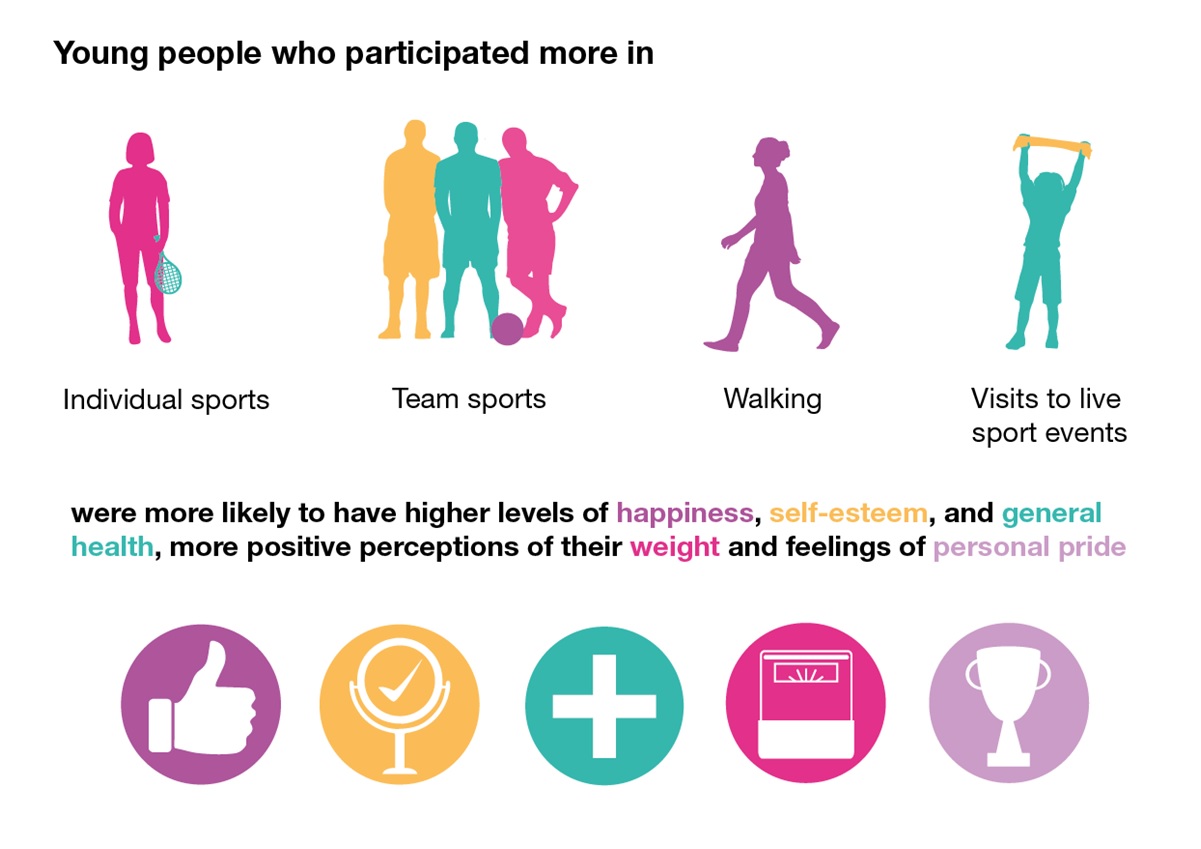
The findings of both reports highlight the importance of social context.
Young people and adults are more likely to engage in most kinds of cultural and sports activities if other members of their households were also doing so. For example, adults living as a couple are five times more likely to dance if their partner also did so, three times as likely to visit a heritage site, and more than three times as likely to take part in cycling, running, outdoor or adventure sports.
The fact that unemployed adults, those caring full-time for another adult and those of African or Pakistani origin are less likely to visit heritage sites probably reflects a combination of difficulty in accessing such activities for some disadvantaged groups, and variations in preferences for particular activities. For example, although Pakistani and African adults are less likely to visit heritage sites, African adults were the ethnic group most likely to visit libraries, and Pakistani adults were the most likely to be involved in team sports.
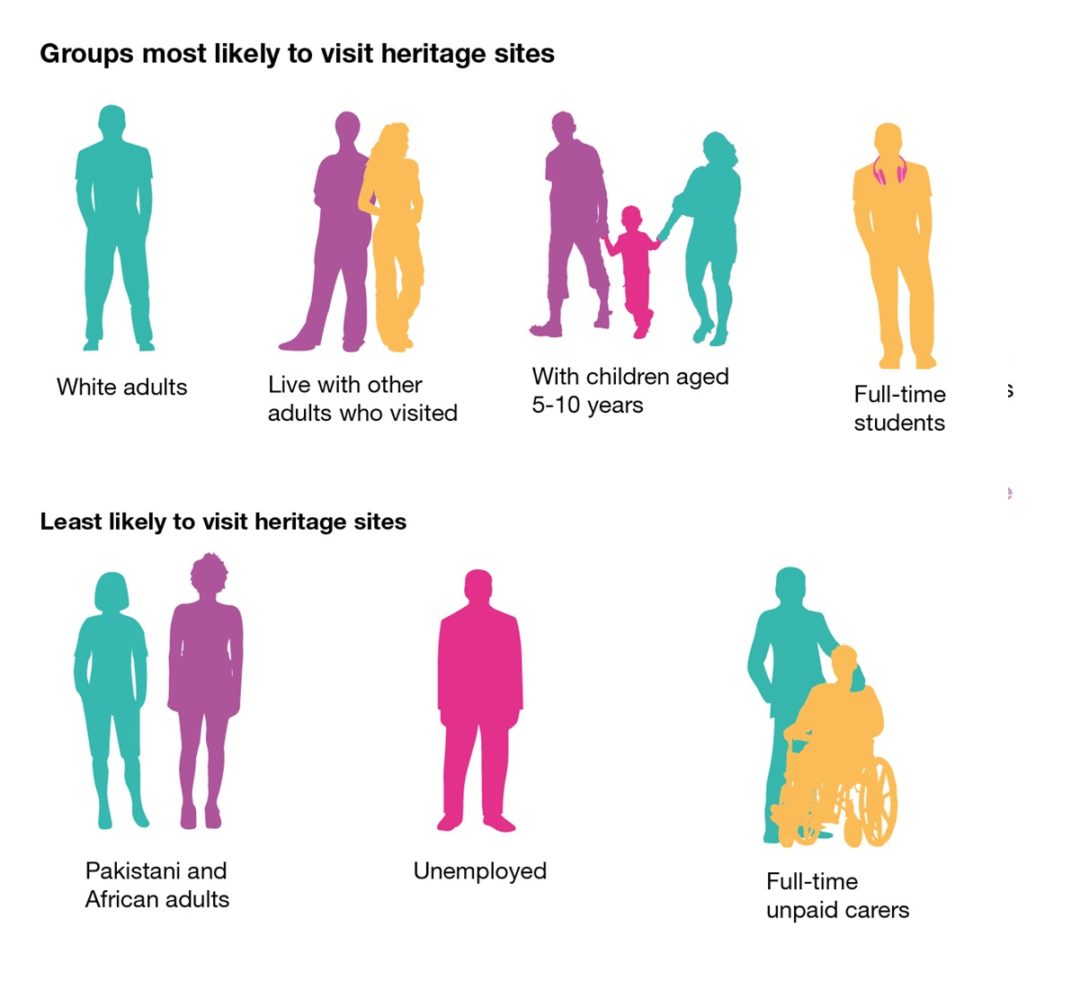
Young people’s participation rates in culture and sports are higher if adults in their households took part in similar activities. This relationship is particularly strong for music, walking, visits to heritage sites and involvement in team sports.
Young people are also more likely to participate in culture and sports where they receive active encouragement from adults in their household, even if this only happened rarely. For example, in households where adults rarely discuss books with the young person, 84% of those young people had read a book in the last month, compared with 58% in households where adults never discuss books. In households where adults took young people to arts events, those young people were more likely to play a musical instrument.
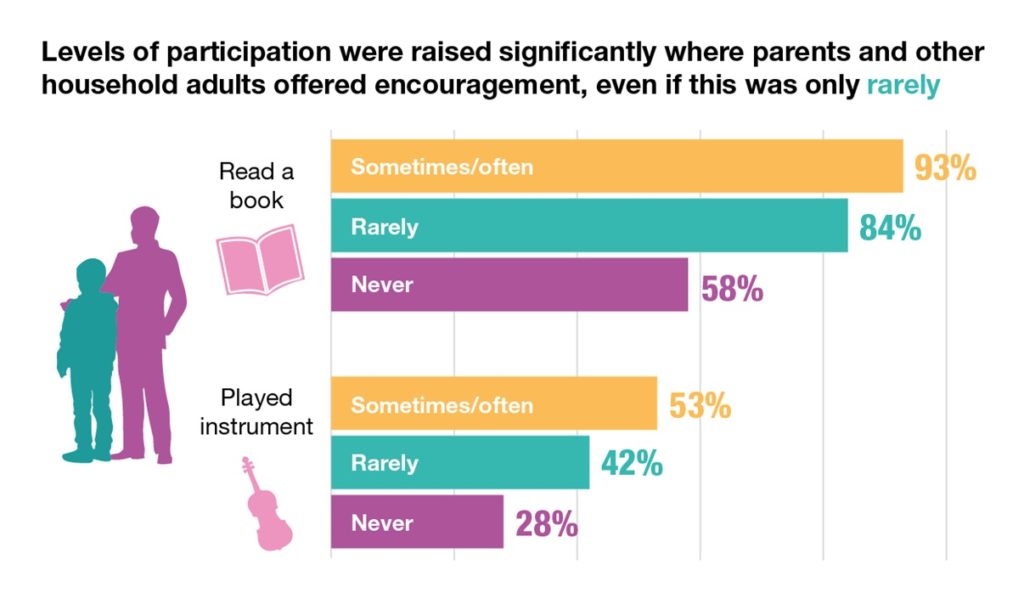
However, evidence suggested that lower income families find it harder to provide these types of encouragement. Young people in poorer households are more likely to say that adults in their household never bought them books as gifts, and never took them to arts and sports events. Participation in many arts activities, including dance, creating visual and computer art, and reading does not vary significantly by household income, but young people from poorer households do have a lower likelihood of playing a musical instrument.
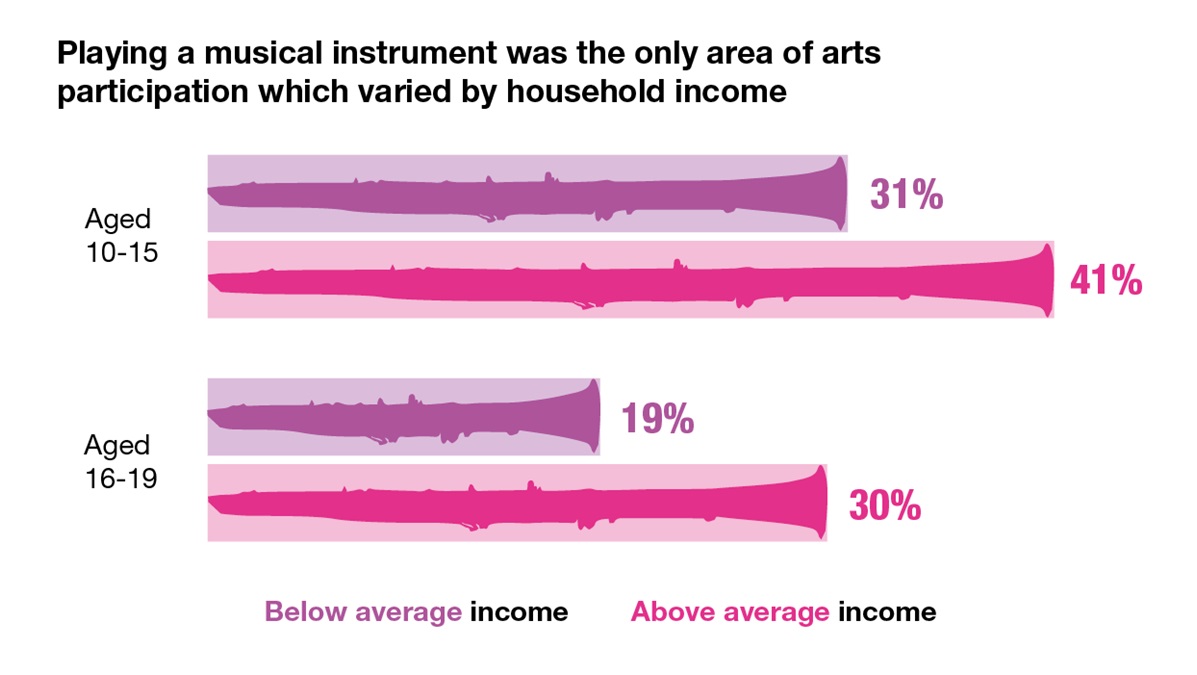
Young people from poorer households are also less likely to visit museums and galleries, the theatre or heritage sites. On the positive side, income makes no difference to the proportion of young people who accessed libraries.
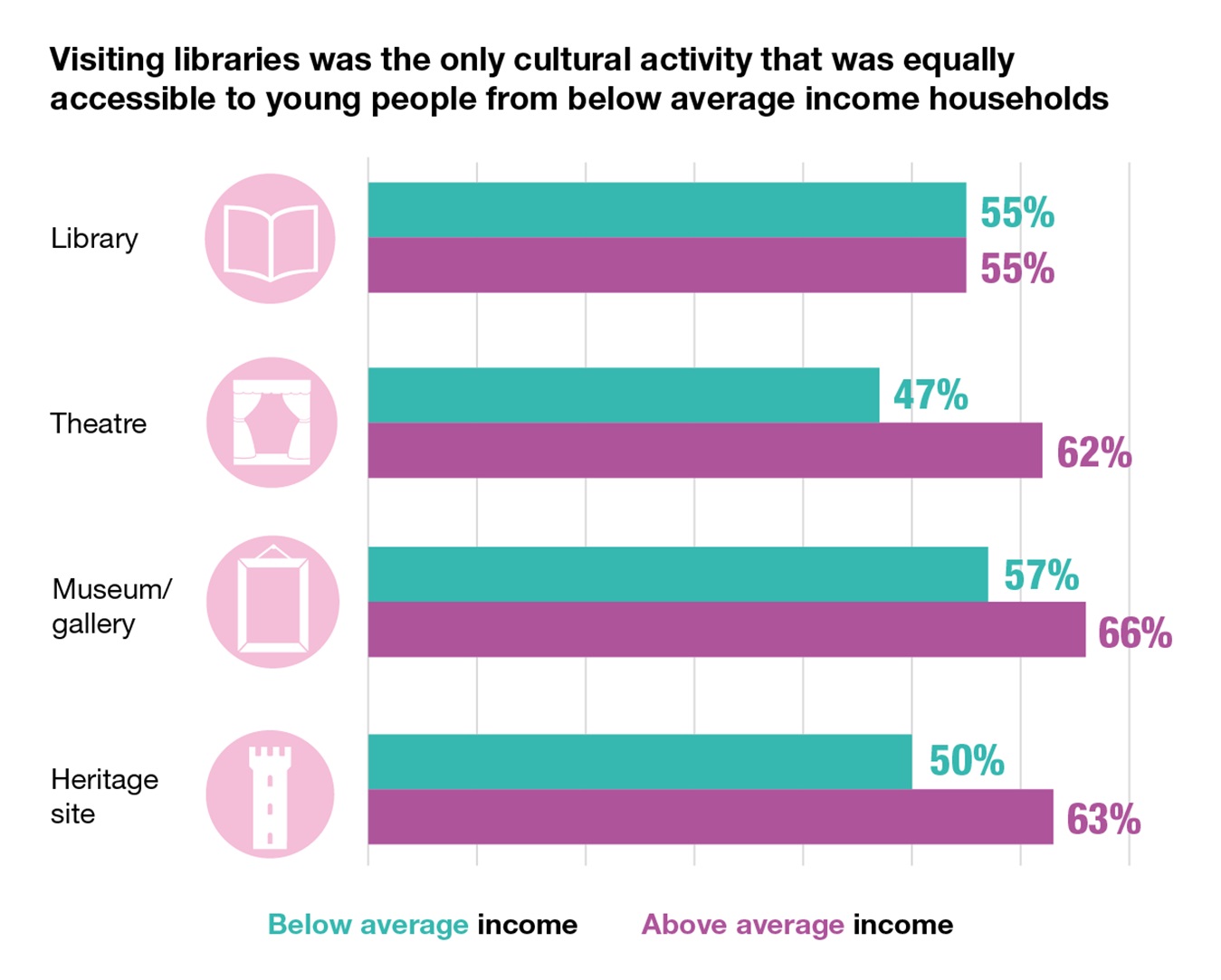
Disengagement from arts and culture is linked with lower educational aspirations, and less time spent on weekly homework. As with adults, there is evidence that different factors were at play for different groups. For example, watching a lot of TV does not significantly affect boys’ engagement in sports but it is linked to lower sports engagement among girls.
Young people living in rural areas are more likely than those in urban areas to engage in walking for pleasure, individual sports, out of school sports classes and frequent sports.
*Jane Lakey left NatCen shortly before this blog was published and now works for Defra.
